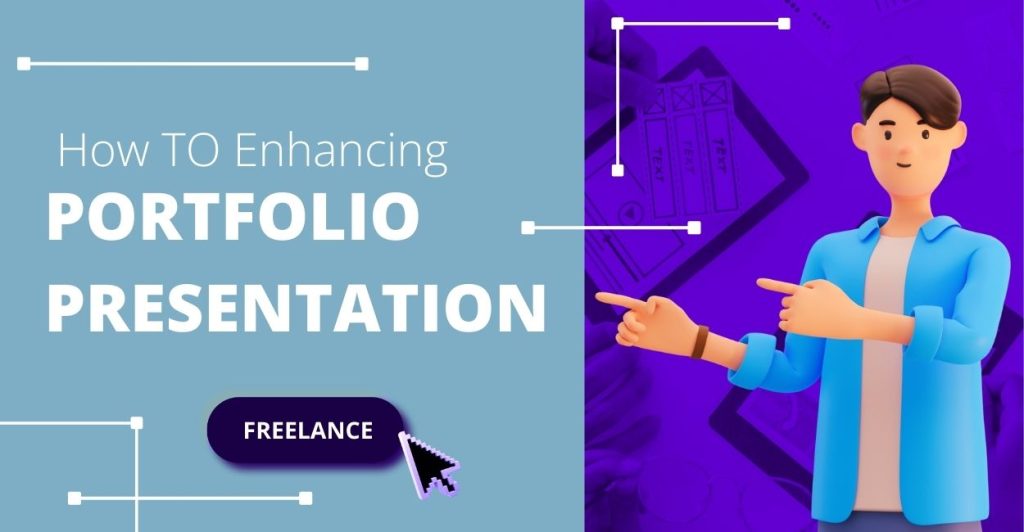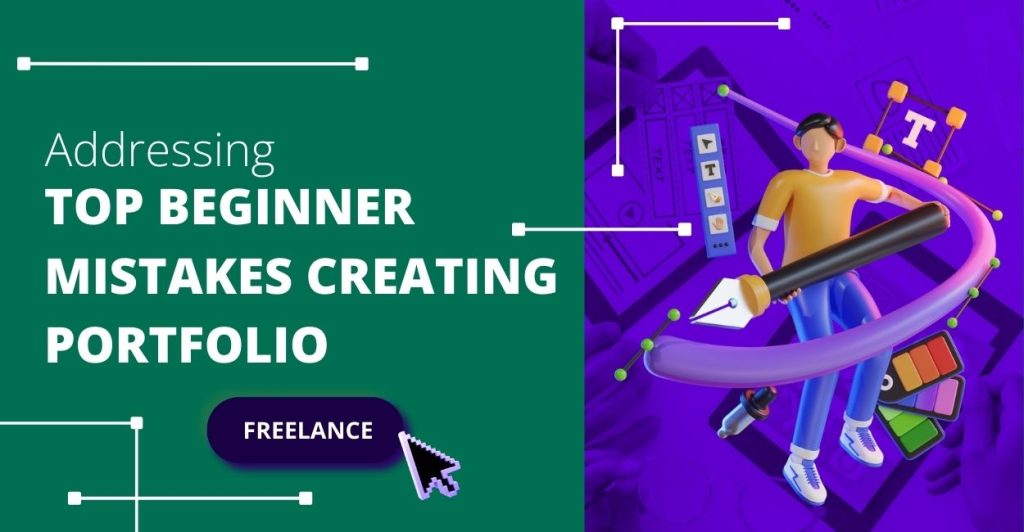How to Create a Graphic Design Portfolio Without Clients
Creating a graphic design portfolio without any client work might seem challenging, but it is entirely possible with the right strategies and creativity. A well-designed portfolio highlights your abilities, draws in potential clients, and creates opportunities for growth. In this guide, we’ll explore actionable steps and advanced tips to help you build an impressive portfolio from scratch that truly stands out.
1. Understanding the Importance of a Portfolio
Why Portfolios Matter for Graphic Designers
A portfolio is more than just a collection of your work—it’s a visual resume that communicates your style, skills, and capabilities to potential clients. Beyond showcasing your abilities, it acts as your personal branding tool.
Showcasing Your Skills and Style
- Portfolio as a Visual Resume: It demonstrates your expertise and serves as a first impression to potential clients or employers.
- Selecting Relevant Work: Focus on projects that reflect your desired niche and highlight the skills you want to be hired for.
- Pro Tip: Tailor your portfolio for specific industries by including projects aligned with those markets, such as e-commerce, technology, or fashion.
Attracting Potential Clients
- Client Magnet: An outstanding portfolio can serve as a tool to actively draw in clients who resonate with your style.
- Diverse Projects: Include various types of work—branding, packaging, web design—to showcase versatility and adaptability.
- Extra Tip: Incorporate testimonials or short reviews from collaborators or mentors to build credibility.

2. Creating Personal Projects
Designing Your Own Brand Identity
- Create a complete brand identity, including a personal logo, color palette, typography, and business cards.
- Example: Develop a cohesive brand identity for your freelance design business, incorporating mockups for letterheads, social media posts, and presentation slides.
- Advanced Tip: Write a case study about the thought process behind your brand identity design, highlighting the rationale behind color and font choices.
Developing Mock Campaigns
- Invent marketing campaigns for fictional or existing products. This could include ad designs, website layouts, and social media assets.
- Example: Create packaging, posters, and Instagram story templates for an eco-friendly water bottle campaign.
- Pro Tip: Research trends in marketing for industries you are interested in. For example, explore sustainable design trends for eco-products or vibrant, playful designs for children’s toys.
Illustrating Your Interests and Passions
- Design projects around your hobbies or passions to infuse personality into your portfolio.
- Example: Design album covers for your favorite music genres or create menus for fictional restaurants.
- Advanced Tip: Add personal anecdotes or stories about why these interests matter to you, making your portfolio feel authentic and relatable.
3. Utilizing Online Resources and Platforms
Participating in Design Challenges
- Join platforms like Dribbble, Behance, or Instagram communities that host design challenges.
- Action Step: Participate in at least one challenge per month and document the process from ideation to final design.
- Pro Tip: Engage with other participants’ work by providing feedback and networking, which can also lead to collaborative projects.
Creating Mockups for Popular Brands
- Redesign logos, websites, or marketing campaigns for well-known brands to demonstrate your creativity.
- Tip: Make sure to clearly mark these as personal, unofficial projects to prevent any legal complications.
- Extra Tip: Research the brand’s target audience and align your designs with their values to make your mockups more realistic.
Collaborating with Other Designers
- Partner with peers or participate in team projects to expand your skills and network.
- Networking Tip: Join design-focused Slack groups, LinkedIn communities, or Discord servers to find collaborators.
- Bonus: Collaboration can expose you to different design approaches, helping you grow as a designer.
| Category | Details |
|---|---|
| Design Challenges | Join platforms like Dribbble or Behance. Participate in one challenge per month and engage with participants to network. |
| Mockups for Brands | Redesign logos or campaigns for popular brands as personal projects. Align your designs with the brand’s target audience. |
| Collaboration | Partner with peers or join design-focused groups like Slack or Discord. Learn diverse design approaches through teamwork. |
4. Volunteering Your Design Skills
Offering Services to Nonprofits and Charities
- Volunteer your design skills to local charities or international nonprofits.
- Example: Create event posters or donation campaigns for animal shelters, food banks, or educational initiatives.
- Pro Tip: Document the impact of your designs, such as increased event attendance or donations, and include these statistics in your portfolio.
Assisting Local Businesses and Startups
- Offer discounted or free services to small businesses in exchange for portfolio rights.
- Advanced Tip: Pitch redesign ideas to businesses with outdated branding—include a before-and-after comparison in your portfolio.
Creating Designs for Friends and Family
- Design invitations, logos, or social media graphics for friends and family to practice your skills.
- Bonus: Use these projects as stepping stones to paid referrals.
- Extra Tip: Add variety by experimenting with different styles for each project.

5. Enhancing Portfolio Presentation
Creating a Professional Website
- Use website builders like Wix, Squarespace, or WordPress to showcase your work in an organized manner.
- Must-Haves: Include an About Me page, contact form, client testimonials, and a blog to share design insights.
- Advanced Tip: Optimize your website for mobile devices, as many clients browse on smartphones.
Organizing Your Portfolio
- Categorize your projects into sections like branding, web design, and packaging for easy navigation.
- Pro Tip: Use engaging thumbnails and concise project titles to entice viewers to explore each piece.
Using High-Quality Mockups
- Present your designs in realistic settings, such as showcasing logos on business cards, t-shirts, or product packaging.
- Example: Use tools like Smartmockups or Placeit to create professional-looking mockups.
- Extra Tip: Experiment with 3D mockups to add depth and realism to your presentation.
6. Learning and Upskilling Continuously
Taking Online Design Courses
- Enroll in free or paid courses on platforms like Coursera, Udemy, or Domestika.
- Pro Tip: Highlight certifications or significant skills learned, such as mastering Adobe Illustrator or web design principles.
Practicing New Tools and Techniques
- Experiment with tools like Figma, Canva, or Procreate to expand your technical repertoire.
- Advanced Tip: Share your experiments on social media to attract feedback and followers.
7. Including Case Studies
Storytelling with Each Project
- Write detailed case studies for your projects, outlining the problem, your approach, and the results.
- Example: Explain how you approached a fictional branding project for a startup, from research to design execution.
- Extra Tip: Use visuals, such as process sketches or mind maps, to make your case studies more engaging.
Before-and-After Comparisons
- Include side-by-side visuals to highlight improvements made by your designs.
- Pro Tip: Annotate these comparisons to explain the thought process behind key changes.
8. Leveraging Social Media for Visibility
Building a Presence on Instagram or Pinterest
- Regularly post snippets of your designs, process videos, and finished projects.
- Pro Tip: Use carousels to share detailed breakdowns of your work.
Creating a LinkedIn Profile
LinkedIn is an excellent platform for building professional connections and demonstrating your expertise. Here’s how to maximize its potential:
- Showcase Your Portfolio: Upload your best work or link to your online portfolio directly in your profile. Use the “Featured” section to highlight standout projects.
- Craft a Strong Headline and Summary: Write a compelling headline that reflects your niche or expertise (e.g., “Creative Graphic Designer Specializing in Branding and Digital Marketing”). Use the summary section to tell your story, including your skills, achievements, and career goals.
- Engage with Industry Professionals: Connect with other designers, potential clients, and influencers in the industry. Personalize your connection requests to make a strong impression.
- Share Updates on Your Growth: Regularly post updates about new projects, completed challenges, or design tips. This keeps you visible to your network and positions you as an active professional.
- Advanced Tip: Establish Thought Leadership
- Write articles or posts about your design journey, challenges you’ve overcome, or lessons learned from personal projects. These can include case studies, design critiques, or industry trends.
- Example: Create a post like “5 Lessons I Learned from Designing My First Brand Identity” to share insights and showcase your expertise.
- Participate in relevant discussions by commenting on others’ posts to increase visibility and engagement.
- Utilize LinkedIn Groups: Join graphic design and creative industry groups to network, seek feedback, and discover opportunities.
| Action | Details |
|---|---|
| Showcase Your Portfolio | Upload your best work or link to an online portfolio using the “Featured” section. |
| Craft a Strong Headline | Create a compelling headline that reflects your niche (e.g., "Creative Graphic Designer"). |
| Engage with Professionals | Connect with designers, clients, and influencers. Personalize connection requests. |
| Share Updates | Post about new projects, challenges, or design tips to stay visible and active. |
| Establish Thought Leadership | Write articles or posts about design lessons, case studies, or industry trends. |
| Join LinkedIn Groups | Participate in design-focused groups to network, seek feedback, and find opportunities. |
9. Expanding Through Freelance Marketplaces
Gaining Experience on Low-Competition Platforms
Breaking into the competitive world of graphic design can be daunting, but starting on low-competition freelance platforms can provide invaluable experience. Here’s how to make the most of these opportunities:
- Start Small on Platforms Like Freelancer, Guru, or PeoplePerHour: Create a profile showcasing your skills and strengths. Begin by bidding on smaller, less competitive projects to build your reputation and gather client reviews.
- Targeted Project Selection: Choose projects that align with your desired niche (e.g., branding, web design, or social media graphics). This ensures the work you do adds strategic value to your portfolio.
- Deliver Quality Over Quantity: Focus on delivering outstanding results for each project. Clients often provide repeat work and referrals when impressed by your dedication and creativity.
- Pro Tip: Use Reviews Strategically
- Ask satisfied clients to leave detailed reviews highlighting your strengths, such as communication, creativity, or quick turnaround times. These testimonials help attract future clients and build trust.
Offering Gigs on Fiverr
Fiverr is a great platform for graphic designers to kickstart their careers by offering specific services at competitive rates. Here’s how to stand out:
- Create Affordable, Niche-Specific Packages: Design packages tailored to a specific need, such as logo design, social media templates, or e-book covers. Keep prices attractive for beginners, but ensure they reflect the quality of your work.
- Optimize Your Gig Listings: Use keywords relevant to your niche to improve search visibility. Include a clear and concise gig description, along with examples of your work.
- Bundle Services for Added Value: Offer tiered packages (e.g., basic, standard, premium) to cater to various client budgets and needs. Example: A basic package for one logo design and a premium package with multiple logo variations and branding materials.
- Extra Tip: Showcase Testimonials and Success Stories
- Use positive reviews and feedback from Fiverr projects to enhance your credibility. Create a portfolio section on your gig page or LinkedIn profile to feature these projects.
- Include before-and-after visuals or mockups to demonstrate the impact of your designs. Also do freelancing.
| Action | Details |
|---|---|
| Create Niche Packages | Offer services like logos or templates at fair, competitive prices. |
| Optimize Listings | Use keywords and clear descriptions with sample work. |
| Bundle Services | Provide tiered packages for different budgets. |
| Showcase Reviews | Highlight positive feedback and before-and-after visuals. |
10. Personal Branding Tips
Developing a Unique Style
Having a distinctive style sets you apart in the competitive graphic design industry. Here’s how to cultivate and refine your unique design aesthetic:
- Identify Your Niche: Explore different design styles—minimalism, retro, abstract, or bold typography—and identify which resonates most with your creativity and target audience. Working on diverse projects can help you discover your strengths and preferences.
- Experiment with Various Design Aesthetics: Don’t shy away from trying new techniques or tools. Use personal projects to test different visual approaches and see which feels most natural and impactful for you.
- Create Mood Boards for Inspiration: Gather inspiration from various sources, such as Pinterest, design blogs, or nature. Use mood boards to organize these inspirations, helping you refine your style over time.
- Advanced Tip: Focus on consistency. For example, if bold, clean lines and vibrant colors define your style, ensure these elements are present in most of your work to establish a cohesive visual identity.
- Showcase Your Style: Once identified, integrate your style into personal branding elements like your logo, portfolio, and website design. This reinforces your identity and attracts clients who appreciate your aesthetic.
Creating a Tagline or Elevator Pitch
A well-crafted tagline or elevator pitch communicates your design philosophy clearly and leaves a lasting impression. Here’s how to create one:
- Summarize Your Design Philosophy: Think about what drives your creativity and the value you offer to clients. Your tagline should capture the essence of your work in a way that’s both concise and impactful.
- Example: “Transforming ideas into impactful visual stories” or “Bringing brands to life through innovative design.”
- Highlight Your Unique Selling Point (USP): What sets you apart from other designers? Whether it’s your innovative problem-solving skills, mastery of a specific style, or ability to translate abstract ideas into visuals, your tagline should reflect this.
- Keep It Memorable and Authentic: Use simple, clear language that reflects your personality. Avoid overcomplicating or exaggerating—authenticity resonates more with clients.
- Bonus Tip: Test your tagline by sharing it with peers or mentors to see if it accurately represents your work and leaves a positive impression.

11. Addressing Beginner Mistakes
Avoiding Overcrowded Designs
Keeping your designs simple and clear is key to creating professional-looking work. Here’s how to avoid clutter:
- Focus on Simplicity and Clarity: Use clean layouts with plenty of white space to make your designs easy to understand. Avoid adding too many elements or colors that can confuse the viewer.
- Prioritize Key Elements: Highlight the most important parts of your design, like the main message or central image, and let them stand out.
- Test Your Design: Show your work to others and ask if the message is clear. Feedback can help you spot areas where the design feels too busy.
Being Honest About Your Experience
When starting out, honesty goes a long way in building trust with potential clients. Here’s how to be transparent:
- Clearly Label Personal Projects: If you’ve created designs for practice or mockups, make it clear that these are personal projects. For example, add a note like “Concept Design” or “Personal Work” in your portfolio.
- Share Your Learning Journey: Talk about how these projects helped you develop your skills. Clients appreciate designers who are passionate and willing to grow.
- Be Honest in Conversations: If asked about your experience, explain what you’ve worked on and what you’re learning. Confidence in your abilities can still make a great impression.
Not Undervaluing Your Work
Even as a beginner, it’s important to price your services fairly. Here’s how to value your work:
- Research Market Rates: Look up what other designers charge for similar services. This helps you set competitive rates without undervaluing yourself.
- Start with Reasonable Pricing: If you’re new, you might charge slightly less than experienced designers, but avoid working for free unless it’s for a strategic reason like building your portfolio.
- Raise Your Rates Gradually: As you gain experience and build a strong portfolio, increase your prices to reflect your growing skills and reputation.
FAQs
- Can I create a portfolio without any client work?
Absolutely, emphasize personal projects, mockups, and volunteer work to effectively highlight your skills and experience. - How do I showcase my skills effectively?
Highlight diverse projects, use case studies, and organize your portfolio for maximum impact. - What tools can I use for creating mockups?
Platforms like Smartmockups, Placeit, and Canva offer excellent options for realistic presentations. - How do I attract clients with a beginner portfolio?
Utilize social media, freelance platforms, and networking to gain visibility and credibility. - What should I include in my portfolio?
Focus on high-quality, diverse work that reflects your style and capabilities.